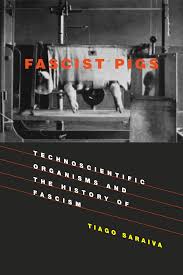
Wednesday 26th of April, time 16:00
Tiago Saraiva is a professor of Drexel University .
In the fascist regimes of Mussolini in Italy, Salazar in Portugal and Hitler's Germany, the first mass demonstrations involved Wheat designed to take advantage of chemical fertilizers, potatoes resistant to late blight, and pigs that thrive in domestic products.
Fascist Pigs explores fascism as biopolitics. Building on the conviction that fascism is a political phenomenon in which management and control of life played a central role, it investigates the making and growing of animals and plants embodying fascism. It details how technoscientific organisms such as pigs, designed to feed the national community envisaged by fascists, became important elements in the institutionalization and expansion of the regimes of Mussolini in Italy, Salazar in Portugal, and Hitler in Germany. It is not a question of replacing humans by non-humans in our explanations of historical change, but to extend the notion of biopolitics and suggest that we must seriously integrate the latter in history to be able to understand how social collectives came into being and how they evolved. Fascist collectives were not only formed through the interventions on human life identified by Foucault and his disciples – hygiene, reproduction, and race. They also included plant and animal breeders’ organisms produced through new practices of the sciences of heredity, life forms as important as human bodies in making fascism.
















